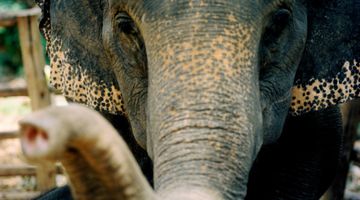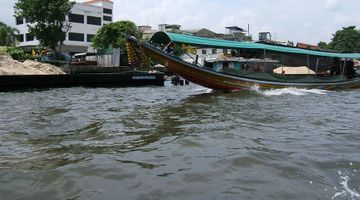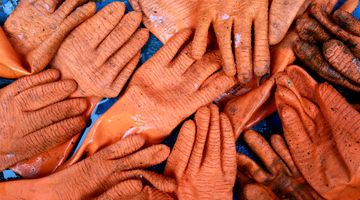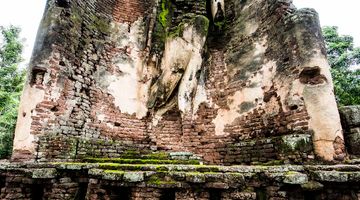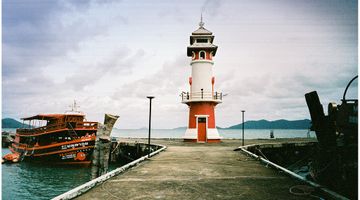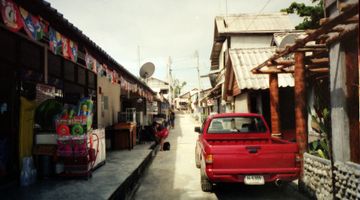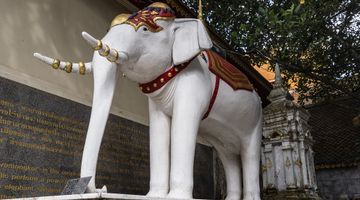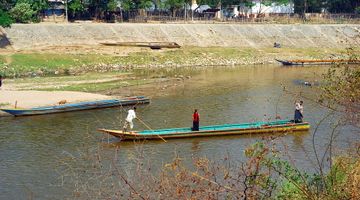Useful Tips on Visiting Elephant Camps in Thailand
While travelling in Thailand, particularly the Northern provinces of Chiang Mai, Lampang or the western province of Kanchanaburi, but also southern islands like Phuket, Koh Phangan and Koh Samui you’ll be offered a chance to visit one of the many elephant camps in the country and you’ll be given the choice of countless activities and programs you can join to get close to these magnificent animals.
We generally choose not to give any advice about which place is better to visit or which one is best to avoid since everything changes so quickly in animal industry in Thailand that in a few months all the information could possibly be out of date. We would like to share with you instead, some personal considerations that will help you to choose by yourself a place with the elephant’s best interest in their heart.
Do animals enjoy performing tricks?
Elephants are not born with the ability of drawing, playing football in organized teams, walking on two feet, sitting down crossing their legs like a human would do; also they have no interest and get no joy by performing any other show in front of tourists. Any time an elephant has to do anything like this, behind that there’s a story of a long cruel training (positive reinforcement methods are almost completely unknown to many of the local elephant trainers).
Let’s see how they are taught painting
For example, even if the idea of buying an elephant’s painting might be quite attractive and the camp’s staff will try to convince you that the elephant naturally started drawing on the ground at a young age and they simply decided to follow his instinct teaching him how to use a paintbrush, the truth is that the process involves a hook and months, if not years, of boring repetition of the same movement for several hours every day until the elephant will be able to replicate under command or by themself a fixed order of movements that will result in a cute drawing. This monotonous and forced pefomance causes high level of stress in the animal, exactly the same thing that would happen to a person forced to repeat the same meaningless action hundreds of time every day for every day of his life; people go crazy in that situation and animals too.
It’s true that for this particular activity, very few facility have started to utilize positive reinforcement in the training process, rewarding the elephant with treats when it performs well rather than punishing him when it doesn’t, but still the vision of an elephant with a paintbrush is something that to us is incredibly disrespectful of the animal’s nature. We totally understand the need of any facility to make money in order to provide the best possible life to the animals they’re looking after, but there are definitely better and more natural ways to do it.
But they do love water, don’t they?
For example elephants love water and need multiple baths every day to cool down the body temperature and keep the mosquitos away spraying sands on their body when they’re wet. A program involving a bath in the river is probably the most respectful way to get close to them. And even if sometimes these programs include actions which need a mild training before been safely executed with tourists (such as splashing people, lifting them with the trunk and let them drop into the water), this is way more acceptable and less traumatic for the animals than, say, painting; elephants are playful by nature (especially at a younger age), and teaching them how to play with people is a lot easier and effective than making them walk in a parade on two legs.
What about riding an elephant?
Riding an elephant is a big controversy; some mahout would teach them to accept humans on their back in a playful way at a younger age, others would adopt more cruel methods, and even if both methods work perfectly fine, the second one is a lot quicker and usually places with greedy owners will choose an easier way. We would avoid anyway any camp that utilizes heavy basket chairs (that can accommodate up to 8 people) for long rides in the jungle in the middle of the day which in the long run will cause problems to the back of the elephant in favor of places that offer only short bareback riding with younger and healthier animals (less than 50 years old). The difference is like a man wearing an empty backpack for few hours or a 50 kg one all day long. If you still want to be able to stand up and walk when you get older you can’t force your back for too long when you’re younger.
How to choose the right elephant camp&
Unfortunately it’s not always easy to tell whether a place is good or not even after visiting it, since everyone is getting better and better on using social media and self-promoting like the ultimate elephant sanctuary where the animals are kept chain-free all the time and a hook is never used. An elephant in captivity can be left without chain only if his mahout is close to him or if a big outdoor space is fenced with electric wire (or strong enough concrete walls which are uncommon since they’re way more expensive) and provided with lots of food; every other fencing will not resist to the power of an adult elephant willing to escape. If somebody tells you that at night time and out of the tourists hours the elephant are free ask them to show you the enclosure where they are kept when the mahouts are sleeping.
Are elephant encounters safe?
At last a safety tip; it’s way better and safer for the visitors a place that let the mahout carrying their hook and using it if necessary in the right way (a soft hit with the flat part without using the pointy end) which doesn’t hurt the animal at all than places where mahouts are totally unable to control the elephant in case of danger and where usually the animal is strongly and painfully punished after closing time if anything went wrong (with no chances for the elephant to understand why he has been punished). Changes can be done and are desirable in the way the elephants will be trained in future but for the ones that you’ll meet now we can chose a more respectful way to interact with them but there’s nothing we can do about the fact that the hook is the only way the mahout have to control them. And this doesn’t mean they are bad people at all; almost every mahout we met live for and with his elephant for his whole life (for very few money, they’re not the ones that get rich in elephant industry), treating him as part of his family, suffering when he’s sick, worrying about him like we would do with a kid, and hoping to find a better facility with more respectful owner to make his animal happier; but simply that is the only way he has been always thought how to do his job, a job that is been passed on for generations in his family in the same way. If talking to them expect to remain speechless when they will ask you why you’re so worried about the way they treat an elephant when the horse industry in the western world is still way worse than that; judging and accusing is useless and will not take anywhere; making conscious choices that will force the owners to opt for more respectful activities is the only way we can give a better life to elephants in Thailand in the near future.
